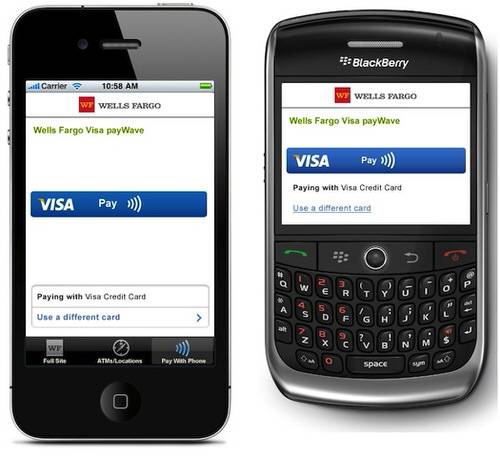Wells Fargo recently rolled out a mobile payments pilot program in San Francisco, allowing the bank to test NFC (near field communication) technology in a real-world environment. The program’s goal, says Peter Ho, product manager for Wells Fargo Card Services and Consumer Lending, is to understand how customers look at mobile payments. The pilot is still very much in an exploratory phase, with just 200 banking customers involved.

But that’s not to say that Wells Fargo isn’t sold on NFC’s potential. “NFC is a very strong and valuable technology coming into the market,” says Ho.
This is the fifth post in a series on NFC here on ReadWriteMobile which will serve to get you up to speed on what NFC is, what notable developments are underway and what commercial programs using NFC will arrive this year. You can follow this series by clicking the tag (or bookmarking the tag) “NFC 2011.”
This post assumes you are familiar with the term NFC as well as the technology’s use in mobile payments. If you’re just starting to learn about NFC, you should begin here with the first post in the series to get caught up.
Wells Fargo’s Pilot Program
The current pilot program, which began in December 2010, will run for six months, after which time, Wells Fargo will reevaluate the situation to determine what the next step may be. Those participating in the trial are sent either a Visa branded In2Pay microSD card which is inserted into a slot on their BlackBerry devices (Tour or Bold) or are provided with the In2Pay Case for iPhone (iPhone 3G or 3GS), which comes with a microSD card inserted into the case itself.
The limited number of handhelds, and especially the exclusion of the iPhone 4, has to do with the long certification process involved in vetting the technology for use in these devices. When the process began, the iPhone 4 had not even launched yet.
The NFC-Enabled Test Application
In addition to the microSD card, which provides the NFC functionality itself, customers are also provided a special Wells Fargo mobile application to install on their phones. The app is sent out via email to participating users in the trial instead of being hosted in the publicly available mobile application stores like iTunes and BlackBerry App World so as not to confuse the bank’s other customers, who are not yet able to use the NFC features.

After installing the app on their phones, the testers tap a button on the sign in screen where they’re able to associate their current debit or credit card with the application. The trial uses “live” cards, not prepaid ones, for a more authentic real world experience.
After the app is configured, customers can use their phone to make a payment anywhere Visa’s In2Pay contactless payments are accepted. In the San Francisco Bay Area, this includes locations like fast food restaurants, in taxis, sport eventing concession stands and even some vending machines.
To use the service at the point-of-sale, customers launch the app and select “pay.” The reader lights up and beeps, indicating the payment has been processed. Customers have 20 seconds after tapping “pay” to complete the transaction.
Wells Fargo decided to trial NFC with Visa’s In2Pay solution instead of a MasterCard or another company because Visa is the primary association for the cards issued by the bank. However, Ho said that the company is not stuck on any one solution when it comes to its use NFC technology, and is interested in talking to anyone involved in the space, including the mobile carriers.
Beyond Mobile Payments
Ho also noted that NFC as a technology has potential beyond mobile payments. As it becomes incorporated into more handsets, more applications should come to fruition, he said.
But even within a mobile wallet framework, there are possibilities for more features beyond just paying for purchases at checkout. Customers could be rewarded for positive behavior, for example, through the use of discount, coupons and offers.
Wells Fargo plans to proceed cautiously in this area, though, because getting the offers portion wrong could annoy customers instead of help them. “How many times to you want to be notified of something?,” Ho asked. No one wants their phone buzzing all the time, he said. The mobile space allows for offers to be a richer experience than the offers sent out via bank statements, inserts and the Web, such as those that Wells provides now. But a customer should have to opt-in to receiving offers, especially location-based offers, on their phone. The phone’s interface provides a way the bank can talk directly to their customers, but this needs to be done only when you have a customer’s permission, he explained.
Wells Fargo’s NFC application has another unique feature that also speaks to its customers’ desire for privacy and control: an “off” button. Although on the one hand, NFC technology provides much stronger security than mag stripe does, customers may feel more comfortable knowing that they can switch it off for added protection. This may send a somewhat confusing message to customers, though. If it’s so secure why does it need to be switched “off” when not in use? Ho says the switch may or may not make it to the final commercial product, if there is one.
Wells Fargo is one of the four banks participating in Visa’s In2Pay pilot program here in the U.S. The others include U.S. Bank, Chase and Bank of America.









